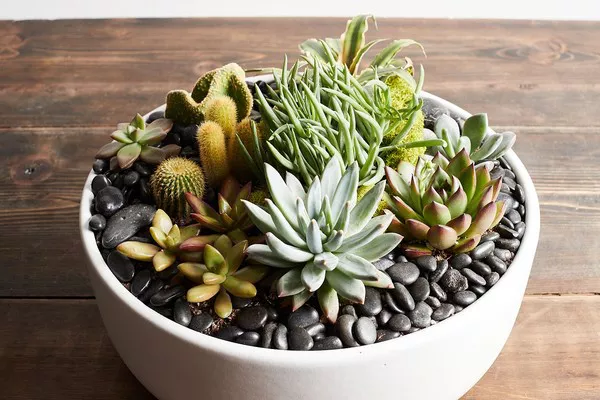Succulents, with their diverse shapes, colors, and low-maintenance characteristics, have become increasingly popular among plant enthusiasts. While purchasing succulents from nurseries or online retailers is a common practice, there are also ways to acquire these beloved plants for free. Whether you’re a seasoned succulent collector or a beginner looking to expand your collection, this guide will provide you with valuable tips and strategies for obtaining free succulents.
1. Propagation from Existing Plants
One of the most common methods of acquiring free succulents is through propagation from existing plants. Many succulent species are prolific propagators, meaning they can reproduce from cuttings, offsets, or leaves. By taking cuttings or removing offsets from healthy parent plants, you can propagate new succulents without spending any money.
To propagate succulents from cuttings, simply snip off a healthy stem or branch from the parent plant using clean, sharp scissors or pruning shears. Allow the cutting to callus over for a few days to prevent rotting, then place it in well-draining soil and water sparingly until roots develop.
Offsets, also known as “pups” or “babies,” are small, miniature versions of the parent plant that grow adjacent to the main stem. Carefully remove offsets from the parent plant, ensuring they have roots attached, and plant them in their own pots or directly in the ground.
Leaf propagation involves removing individual leaves from the parent plant and allowing them to sprout new roots and shoots. Lay the leaves flat on well-draining soil and mist lightly to keep them hydrated. Over time, new plantlets will emerge from the base of the leaves, eventually growing into mature succulents.
See Also: How often should you feed succulents?
2. Succulent Swaps and Trades
Another excellent way to acquire free succulents is by participating in succulent swaps or trades with other enthusiasts. Succulent swaps are events where plant lovers gather to exchange cuttings, offsets, or entire plants with one another. These events can take place in person at local gardening clubs, botanical gardens, or community centers, or online through social media platforms and gardening forums.
Participating in succulent swaps not only allows you to acquire new varieties of succulents for free but also provides an opportunity to connect with fellow enthusiasts and share knowledge and experiences. Before attending a succulent swap, consider propagating some of your own plants to bring along for trading, ensuring that you have something to offer in exchange for the specimens you desire.
To find succulent swaps or trading opportunities in your area, search online for gardening groups or forums dedicated to succulents. Additionally, check with local gardening clubs or botanical societies to inquire about upcoming events or gatherings where succulent swaps may occur.
3. Online Forums and Social Media Groups
The internet has become a valuable resource for succulent enthusiasts seeking to connect with like-minded individuals and expand their collections. Online forums and social media groups dedicated to succulents provide platforms for members to share tips, advice, and, importantly, plants.
Joining online forums or social media groups focused on succulents can open up opportunities to acquire free plants through giveaways, trades, or exchanges. Many members of these communities are eager to share their love of succulents and may be willing to provide cuttings or offsets from their own collections to fellow members.
When participating in online communities, be respectful of the rules and guidelines established by the group moderators. Contribute positively to discussions, offer assistance to other members, and express gratitude when receiving free plants or cuttings from fellow enthusiasts.
4. Local Plant Swaps and Events
In addition to succulent-specific swaps, many communities host general plant swaps or gardening events where attendees can exchange a variety of plants, including succulents. These events are excellent opportunities to diversify your succulent collection while connecting with other gardeners in your area.
To find local plant swaps or gardening events, check community bulletin boards, local newspapers, or online event listings. You can also inquire at garden centers, botanical gardens, or horticultural societies to see if they host or are aware of any upcoming plant swap events in your area.
When attending local plant swaps or events, consider bringing along a selection of succulents from your own garden to trade with other attendees. This not only enhances the trading experience but also allows you to share your passion for succulents with fellow gardeners.
5. Community Gardens and Public Spaces
Community gardens, public parks, and green spaces can also be sources of free succulents. Many public areas feature succulent gardens or landscaping where these plants are grown in abundance. While it’s generally not acceptable to remove plants from public spaces without permission, some community gardens or parks may allow visitors to take cuttings or offsets for personal use.
Before collecting succulents from community gardens or public spaces, be sure to obtain permission from the appropriate authorities and adhere to any guidelines or regulations in place. Avoid damaging existing plants or habitats, and only take cuttings or offsets from plants that are healthy and thriving.
By seeking permission and demonstrating respect for public spaces, you may have the opportunity to acquire free succulents while also enjoying the beauty of community gardens and green spaces in your area.
Conclusion
In conclusion, there are numerous ways to acquire free succulents for your garden or collection, ranging from propagation and plant swaps to online forums and community events. By leveraging these resources and networking with fellow enthusiasts, you can expand your succulent collection without breaking the bank.
Remember to propagate from existing plants, participate in succulent swaps and trades, join online forums and social media groups, attend local plant swaps and events, and explore community gardens and public spaces. By taking advantage of these opportunities, you can enjoy the beauty and diversity of succulents while connecting with other plant lovers in your community and beyond.


